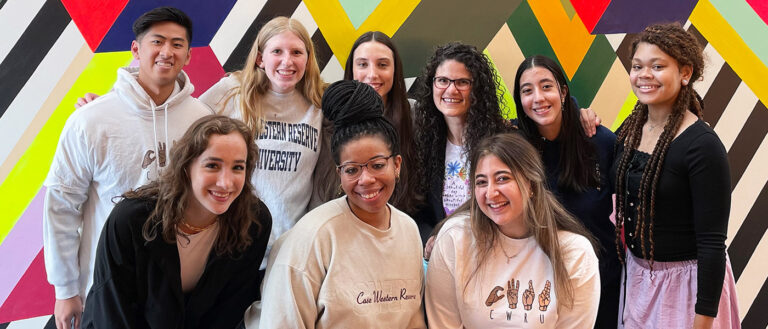In a matter of days, college students around the country will trade in their summer jobs for backpacks, books and new syllabi. Thanks to a group of Case Western Reserve University students, some of those syllabi are now digitally accessible.
Digital accessibility ensures everyone, including those with disabilities and non-English learners, can perceive, understand, navigate and interact with information on the internet, regardless of ability. At Case Western Reserve, this means websites, social media accounts, applications and content available online—including images, videos and documents—need to meet specific guidelines relating to how elements look, sound and interact.
Lauren Calandruccio knows how important digital accessibility is, in part because she’s a member of University Technology’s Digital Accessibility Learning Community, a working group devoted to developing resources and strategies for improving the digital accessibility of course content.
Calandruccio, associate dean of academic affairs at the College of Arts and Sciences and professor in the Department of Psychological Sciences, recently enlisted a cohort of undergraduate students to help improve digital accessibility in her department.
She set a goal for the group, which she calls the Digital Accessibility Team, to make every syllabus in the communication sciences program digitally accessible. The group, which was led by then communication sciences and psychology student Caroline Paroby (CWR ‘22) during the spring semester, exceeded that goal and then some, as they moved on to syllabi in the psychology program.
“Through the Digital Accessibility Team, students were able to learn about accessibility, acquire new skills and be leaders of change,” Calandruccio said. “Students are familiar with their coursework, so it makes the most sense for students within majors or departments to do this work, like this group did with communication sciences and psychology.”
Paroby worked closely with communication sciences majors and Emerging Scholars Program students Stefani Garcia and Aja Leatherwood. The team met individually with faculty members to give a presentation, educating them on what digital accessibility is and how it impacts their students.
From there, they shared the common themes within syllabi that were not digitally accessible and outlined the changes that were made to format their syllabi to be digitally accessible.
“This was a fun project and an opportunity to make our campus more inclusive,” Paroby said. “The students involved were excited to share their work and the faculty were grateful.”
Paroby graduated in May, but the remaining Digital Accessibility Team is still very interested in continuing their work.
“I hope it’s a domino effect,” Leatherwood said. “I hope this pushes the university to look at accessibility as a whole and we become a more accessible and inclusive university all together.”
Calandruccio hopes this model of working with students to execute accessibility plans is copied throughout the university.
“Beyond teaching the students about digital accessibility, this experience helped students develop leadership, management, communication and technical skills,” Calandruccio said. “This student-led model could be a success for our students, our faculty, and our institution and could serve as a beacon of inclusion.”
Learn more about digital accessibility at Case Western Reserve.

